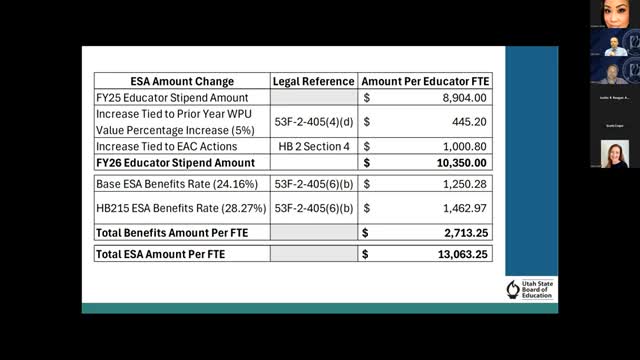Utah legislature reallocates school funding affecting health and arts programs
May 24, 2025 | USBE Financial Operations, Utah State Board of Education, Utah Government Divisions, Utah Legislative Branch, Utah
Thanks to Excel Chiropractic and Scribe from Workplace AI , all articles about Utah are free for you to enjoy throughout 2025!

This article was created by AI using a video recording of the meeting. It summarizes the key points discussed, but for full details and context, please refer to the video of the full meeting. Link to Full Meeting
A notable point raised was the one-time appropriation of $1 million to the Beverly Taylor Sorensen Elementary Arts Program, which will not be renewed for the 2026 fiscal year. This decision has raised concerns about the sustainability of arts education funding in the state.
The meeting also addressed the teacher and student success program, which saw an increase due to a new statutory element in the basic levy. However, this increase is expected to be temporary, as the additional funding will not continue into the next fiscal year. Overall, the basic school programs are projected to experience a 33% increase, largely driven by changes in the funding formula established by House Bill 2.
Local funding estimates for voting and board programs are up by approximately $68 million, although state funding remains unchanged from the previous year. The guarantee rate for funding has risen significantly from $64 to $75.58, attributed to a decrease in the number of weighted pupil units (WPUs) and adjustments in the funding formula.
Capital outlay programs also faced challenges, with a $5.6 million cut and the elimination of the enrollment growth program. These changes could impact school districts' ability to manage capital expenditures effectively.
The meeting concluded with a focus on the funding changes for both school districts and charter schools. While many districts, particularly smaller rural ones, are seeing increases in funding, larger districts with higher property tax wealth are experiencing less favorable changes. Charter schools, too, are seeing an overall increase in funding, although this is complicated by the opening and consolidation of schools.
As the state prepares for the upcoming fiscal year, these discussions underscore the ongoing challenges and adjustments in school finance, which directly affect the quality of education and resources available to students across Utah. Stakeholders are encouraged to reach out for further clarification on the legislative estimates and their implications for local education.
Converted from 50250505 2025 Spring School Finance Training (Drafted by NG) meeting on May 24, 2025
Link to Full Meeting
Comments
View full meeting
This article is based on a recent meeting—watch the full video and explore the complete transcript for deeper insights into the discussion.
View full meeting
